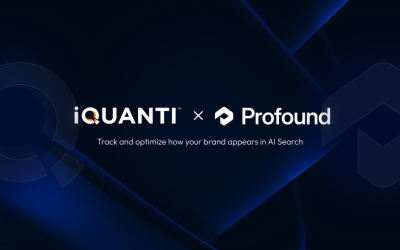Digital ad spending growth in financial services has slowed in recent years. Marketers consciously reduced spending and even over-corrected because of an uncertain environment. But 2024 is expected to see strong growth, driven primarily by the larger players in the industry who continue to invest in technology integrations, digital platforms, and AI in marketing.
The environment is still tough for regional banks. They are still recovering from the banking crisis of 2023. Acquiring new deposits and retaining existing ones has been challenging. There has been a slowdown in customer spending growth and an increase in delinquencies as well.
Competition in the digital space is tightening. While the larger firms have the financial might to absorb the market shocks, regional firms and challenger brands need to make prudent choices with their marketing resources to thrive during these testing times.
They need to do more with less. But how?


iQuanti’s financial services marketing expert Vishal Maru (VP, Digital Solutions) explores how regional banks and financial services firms can make the most of their advertising dollars in a highly competitive digital marketing landscape.
Access the on-demand webinar with 5 strategies to drive your paid search goals in 2024 here.
We unpacked four key paid media strategies to help mid-size and regional banks successfully compete against larger players and grow acquisitions in 2024.
1. Transition from volume-based optimization to value-based optimization
Non-branded paid search is a highly competitive channel and bank marketers struggle to scale efficiently due to the high cost of acquisitions.
At iQuanti, we analysed the cost of acquisition of low-value accounts vs. the cost of acquisition of high-value accounts across multiple financial services brands, products and campaigns. We found that while the average revenue per account for financial services varies vastly, the costs of the acquisition remain comparable. By channeling even a small portion of your marketing budget currently being spent on acquiring low-value customers to focus on high-value customers, bank marketers can expect to see significant lifts in ROAS.
Switching to a value-based optimization approach in paid search can help drive better quality accounts, deliver on business KPIs and scale campaigns.

In some cases, with just a 5% mix change between high-revenue and low-revenue accounts, we have delivered close to 40% lift in ROAS, and built the ability to scale acquisitions within the same budget.
Seeking to discover our success stories with this strategy? Want to understand how we configure the correct signals with conversion-value-based bidding for consumer banking products at iQuanti? Reach out to our Digital Solutions team today!
2. Build custom, high-converting landing page experiences
Banks, large and small, often prioritize optimizing various aspects of media, such as bids, budgets, and tactics, as well as targeting. However, there tends to be insufficient attention given to optimizing landing pages and enhancing user experiences. Yet, even a slight enhancement in landing page experiences can yield significant improvements in overall campaign economics. We have seen two core challenges with landing page experience optimization across financial services firms:
a.
The ownership of landing pages is always contented. Between the paid media teams and website/technology teams, the same set of landing pages keeps getting shuffled and used across various campaigns and intents, without being constantly optimized, resulting in a broken end-to-end experience for the user.
b.
Often, banks utilize website pages to generate traffic, including paid media traffic. This means that the page UX is often not optimized for conversions. Unless landing pages are optimized for specific user intents, they do not necessarily align with the users’ decision-making criteria and may lack in scanability/accessibility factors. They may fail to drive the desired action as well with unclear or non-prominent (or in some cases, irrelevant) CTAs.
Lack of internal resources, lack of analytics and testing capabilities to continuously test and improve etc. are real concerns as well, by partnering with the right external partner who can take over the testing cycles, host the pages externally and constantly build new pages and content to match your user intents can vastly improve your ROI.
Elevate, Engage, Convert!
Explore LEAP (Landing Experience Accelerator Program) –
iQuanti’s cutting-edge, data- and tech-led landing page management and optimization program that has successfully empowered leading brands to deliver exceptional online experiences.
A strong landing page strategy can increase the ROI of your paid media campaigns by customizing experiences for different intents, themes and even across channels.
3. Maximize the potential of your branded paid search campaigns
Paid search marketers frequently get asked how they would justify investments in branded paid search. The general perception tends to be that a brand would have gotten conversions from branded search terms, even in the absence of paid ads running against them. How do you gauge the incrementality of branded search? We’ve identified these main factors that impact the incrementality of branded paid search:
a.
Not all branded searches come with the same intent. The ones closer to purchase intent, for example, “apply for xxx cashback card” are likely to convert via organic search results, and probably do not need to be supplemented by paid ads. With keywords which have a comparison or review intent, however, we have seen there is incremental value in running paid search ads, oftentimes also because there is a lot of competition for such themes. We strongly recommend running incrementality tests to identify pockets where you can redirect your paid ads budget to gain higher conversion rates overall.
b.
Certain themes of keywords, for example, cashback or BT cards, have much more aggressive competition compared to others. In such cases, we recommend gaining ground in the SERPs by partnering with the right affiliates who highlight your brand/products as well as by conquesting real estate via relevant paid ads. We’ve seen this “halo effect” giving lifts up to 20% overall- across organic results, affiliate links and paid ads.
c.
Regional banks and challenger brands can hugely benefit from branded paid search ads in geos where your local brand presence and footprint are weaker than in others.
4. Craft a non-brand strategy based on competitive strengths
With Google, an increasing number of facets of campaign management are becoming automated, and in turn, more efficient. And the strategic aspects of building and managing an impactful non-branded paid search campaign still need the touch of a smart marketer.
Non-branded paid search is extremely competitive. Brands often see inefficiencies in non-branded paid search by spreading their budgets thin across multiple themes, where they may not have an edge. We recommend doing a detailed analysis to identify key competitive strengths, not only from a product/service benefits or features perspective but also from the perspective of whether you have an advantage in Search – and really focus on themes wherein the brand is stronger or at least at parity.
For regional banks, there may be some geos where you have a stronger brand presence and affinity. Identify cases where it would be advantageous to be more aggressive with existing customers for the advantage or parity keywords vs. a slightly more conservative approach for non-customers or pure prospects. Look at ad copies and messaging and landing pages from a business perspective and understand what are the benefits or features that really make your product more competitive in the market and focus more on those. Keep an eye on your competitors’ offers/benefits/new products and alter your offers, strategy, and messaging accordingly. Use automation over and about that.
Having a strong strategic approach based on competitive strengths and applying automation on top for conquesting has delivered strong results for many of our clients.
Access the on-demand webinar here to understand these strategies in more detail.
Reach out to us with questions/comments or for a quick consultation.




